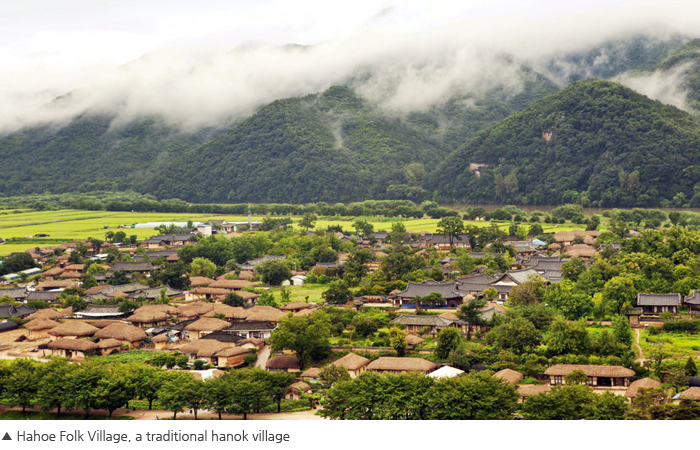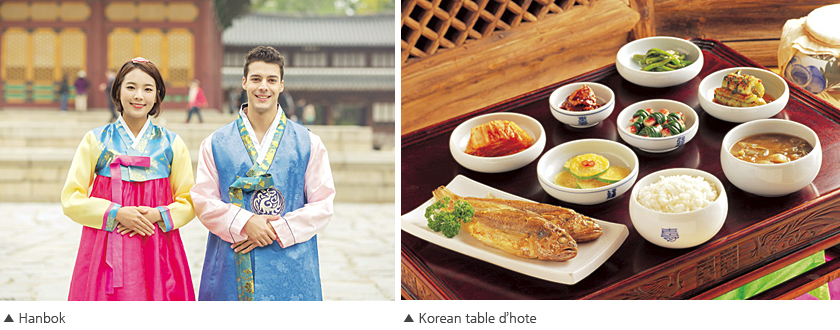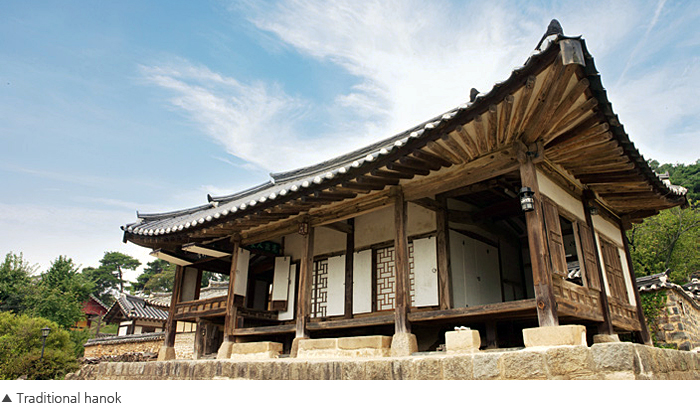Culture Focus
Korea in the World
Korea in the World Community

Korea’s Cherished Traditions
Korean people in general have a strong cultural pride. Koreans wear modern clothing in everyday life, but traditional Korean clothing, or hanbok, is worn on special occasions such as weddings and traditional holidays. The hanbok consists of a short jacket and a long dress for women and a jacket and loose pants tied at the ankles for men. Bright silk colors are employed to create a cheerful and elegant effect.
Korean food in general is called hansik and is gaining an enthusiastic global following. A typical Korean meal consists of rice, soup, savory braised or fried meat or fish, a variety of vegetable side-dishes, and kimchi (fermented cabbage with spices, or other variations of which there are some 220 official kinds), and is eaten with metal chopsticks and a spoon.

The traditional Korean house, or hanok, is experiencing renewed popularity these days, although apartment complexes are the most common housing option for Koreans due to the country’s high urban density. Hanok feature charming wooden buildings with granite foundations, a unique under-floor heating system called ondol, and gray tiled roofs. Excellent examples of these structures, which are designated for preservation, can be found in a number of urban neighborhoods and rural towns such as Andong Hahoe Folk Village. Since ancient times, Koreans have used the excellent traditional ondol floor-heating system, and this technology is used even today in modern homes. Floor heating has been popular in many Western countries for its healthy effects.
Korea in the World
It is not easy to understand a foreign country in a short time. is a brief introduction of Korea for educators unfamiliar to Korea. The booklet collects and summarizes significant historical, cultural, and politico-economical traces of Korea. An essential material for educators who want to bring Korea in the textbook and to classroom.
It is not easy to understand a foreign country in a short time.

